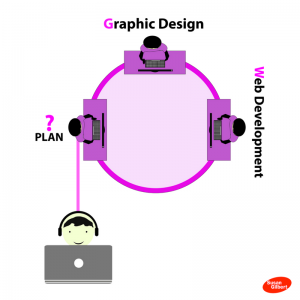How do I change someone’s mind?
Sorry, but you aren’t going to do it by calmly laying out your argument with evidence and logic.
Welcome to Pressing Questions, Fast Company’s mini-advice column. Every week, deputy editor Kathleen Davis, host of The New Way We Work podcast, will answer the biggest and most pressing workplace questions.
Q: How do I change someone’s mind?
A: This is a billion-dollar question that companies, politicians, and spouses the world over want to answer. And I hate to break it to you, but if you want to convince someone to change their thinking by calmly laying out your argument with evidence and logic, it won’t work.
The part of the brain that responds to logic is responsible for only about 5% to 10% of our judgments. The rest of our thinking happens in a part of our brains that deal with impulse (good old fight or flight). Humans don’t respond well to coercion. So, our instinct to argue our way to agreement is the opposite of what works. What actually changes someone’s mind? Giving them a sense of autonomy. Experts say the best way to do that is to make people feel like they have a choice.
Or as civic engagement expert Peter Block says: “The yes of another person means nothing if they don’t have the ability to say no. There can be no commitment if there is no choice.”
Parents know all about giving guided choices (instead of “We’re late; we need to leave,” it’s “do you want to put your shoes or coat on first?”) Believe me, it doesn’t always work. But it can be more effective in workplace contexts: People are more likely to follow through with something if they feel they have some control over the process.
If it’s less about getting someone to do something and more about changing someone’s thinking, it can be effective to lead the person along in stages, to help them to better understand their own thinking. Author David McRaney says: “Persuasion is mostly encouraging people to realize change is possible. All persuasion is self-persuasion. People change or refuse based on their own desires, motivations, and internal counterarguing; and by focusing on these factors, an argument becomes more likely to change minds.”
A good way to help lead people along is to approach them with empathy and ask genuine clarifying questions, rather than explaining your views. It’s not easy and not always successful but it will likely get your further than anything else you’ve tried.

ABOUT THE AUTHOR
(8)
Report Post






